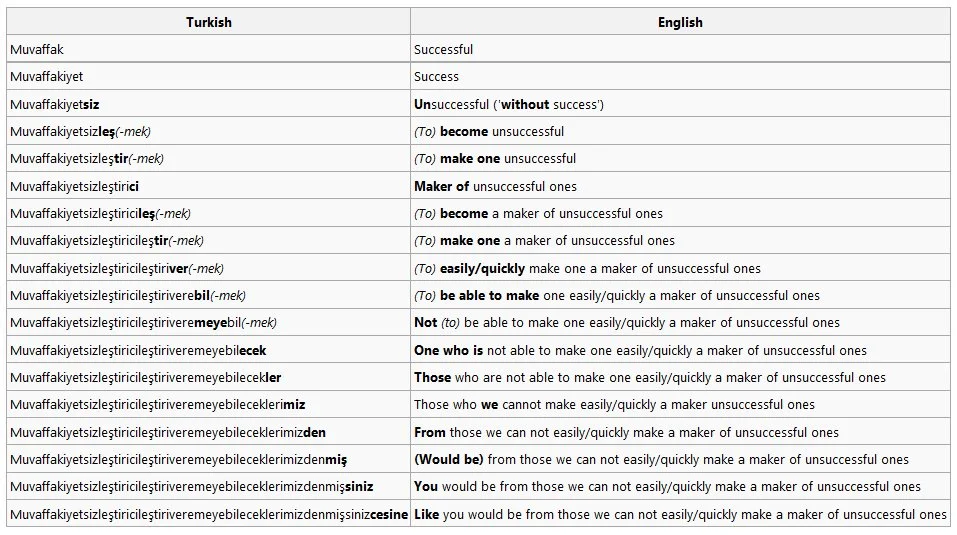As Graham Howe says on Quora; If your native language is English or one of the other Indo-European languages, Turkish does indeed present a number of challenges. For example:
- A completely different sentence structure to most Western languages: Turkish is an agglutinative language – this means that, whereas in English we form sentences by placing single words in the appropriate order to convey our meaning, Turkish adds suffixes to the end of words, sometimes resulting in horrendous-looking long words. For example: ev = house; evim = my house; evimde – in my house; evimdeki = which is in my house; evimdekiler – the ones which are in my house; evimdekilerin – of the ones who are in my house; evimdekilerin annesi – the mother of the ones that are in my house.
- Vowel harmony: this means that words can contain only ‘front vowels’ (e, i, ö or ü) or ‘back vowels’ (a, ı, o or u), and these vowels cannot be mixed. Although this rule has countless exceptions, due to the number of words borrowed from other languages, it is fairly rigidly applied when it comes to grammatical endings: geldim – I came; aldım – I took; buldum – I found; gördüm – I saw, where -dim/-dım/-dum/-düm is the first person single past tense ending, the vowel changing according to the last vowel in the verb root.
On the plus side, once one has learnt the sentence structure, the cases and the verb endings, Turkish is a fairly logical language with only a handful of irregular verbs and noun cases.
